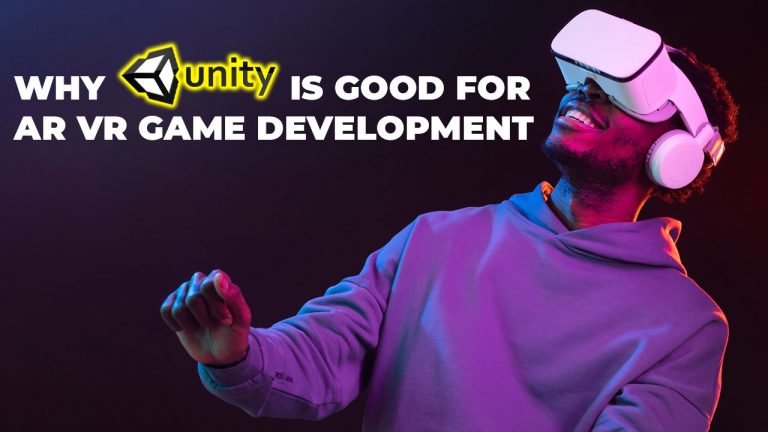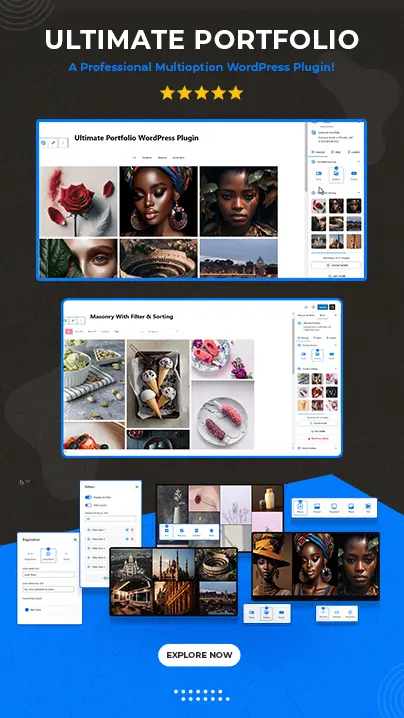
Unity is a simple, open-source game engine providing tools and support for game developers to build innovative, interactive games across a variety of platforms. The game engine is equipped with tools and features that are specifically designed for Augmented Reality and Virtual Reality, which turn unrealistic imaginations into reality.
Unity For AR VR Game Development
Unity provides VR support with a single API interface that can interact with VR devices, a project folder that does not require external plugins, the ability to switch between devices, and so much more.
Virtual reality support in Unity
Virtual reality platform Unity has purchased HDRP (High Definition Render Pipeline). Both HDPR and Unity XR plugins are compatible with each other, and HDPR supports Unity XR’s new plugin framework, which provides multi-platform dev tools, extended plugin support, as well as access to higher-capacity platforms.
Augmented reality support in Unity
Users can create AR applications for handheld and wearable devices using Unity’s AR Foundation. Aside from device tracking, raycast, gesture recognition, face detection, meshing, point cloud detection, and more, the AR foundation supports a wide range of features across a variety of platforms. The foundation is available from the Package Manager, and you need to download one of the platform-specific ARs. In addition to ARKit XR Plug-in, ARCore XR Plug-in, Magic Leap XR Plug-in, and Windows XR Plug-in, ARCore XR Plug-in is also available.
XR Development in Unity
Unity includes XR development capabilities to optimize AR and VR experiences. XR has the capability of simulating an alternate environment around the user in Virtual Reality; and in AR, the XR application displays digital content over the real-world display. As a full-featured game engine, Unity offers full support to creators by optimizing the XR tech stack for each platform, integrating deeply into each platform, and improving the engine. XR is supported on various platforms except for WebGL. XR SDK plugin allows users to integrate directly with Unity so they can take advantage of all the features Unity offers.
Multi-platform developer tools, better partner updates, and more platforms for enhancing VR and AR experiences are a few of the benefits offered by the XR plugin framework.
Development of AR VR games in Unity using XR applications.
Virtual Reality development
- Stereo pass stereo rendering (Doublewide rendering) – Virtual reality applications for PlayStation 4 and PC are compatible with this feature. VR and AR devices with advanced stereo rendering perform better. For the viewer, XR rendering creates the stereoscopic 3D effect by creating two views, one for each eye. Multi-pass rendering, single-pass rendering, and single-pass instancing are all stereo rendering methods in Unity. There are varying results in each of the three cases because the performance of the three modes varies.
- Custom shader in Unity – Game visuals and the overall look and feel are very influential, and textures, materials, and shaders are what make the game look and feel so good. Shaders will be covered here. Shaders are scripts that are used to create interesting visuals for video games. The calculation of every pixel in a game is performed by these scripts. They are based on the inputs of materials and lighting. Shaders are developed with visual programming.
- Vertex color mode By using the paint settings toolbar in Unity, the user can choose from a number of color modes to change the vertex colors of a mesh. The vertex color mode is only available if the shader supports it, which is not the case for most Unity shaders. There are some default poly brush materials that can paint colors on a mesh using vertex colors in the Unity editor. Vertex color mode lets you choose from color palettes and brush types for brushing, filling, and flooding colors on a mesh. It also lets you customize prototyping stages, zones, team layouts, and more.
- Edit Mode Toolbar – In ProBuilder, this is a color-coded toolbar that allows you to switch between the four different editing modes: Object mode, Vertex mode, Edge mode, and Face mode. Unity’s Edit Mode Toolbar features an Object mode that lets you pick and manipulate GameObjects. You can select and change the vertex coordinates on a ProBuilder by using Vertex mode. With the Edge mode, you can select and manipulate edges (lines) on a ProBuilder mesh. The Face mode, on the other hand, lets you pick and move faces (polygons). A vertex, edge, and face mode can be grouped together as an element mode. Additionally, on the toolbar, you will find hotkeys (keyboard shortcuts) for launching various tools in edit mode.
- RenderScale or EyeTextureResolutionScale With different levels of eye texture resolution, users can increase or decrease the resolution by changing the eye texture size. Different values of RenderScale create different eye textures with different resolutions.
| Value | Eye Texture | Result |
| 1.0 | Default | – |
| < 1.0 | Lower resolution | Reduced sharpness due to improved performance |
| > 1.0 | Higher resolution | Images are sharper and memory usage increases, but performance drops. |
In order to dynamically change the eye render resolution on the fly, consider using XRSettings.renderViewportScale.
It is different from RenderScale in that RenderViewportScale allows you to dynamically change the eye render resolution. The eye texture amount is adjustable between 0.0 and 0.1 for rendering. Using this will allow you to reduce the resolution at runtime if, for example, you want to maintain an acceptable frame rate.
- Scriptable Render pipelines (SRP) – The technology used for VR allows you to schedule and render commands through C# scripts. Through this API layer, you can design customized rendering pipelines.
Augmented Reality development
- AR Occlusions – Augmented reality uses computer-generated materials and objects to add depth and information to a 3D scene. The term occlusion describes the effect of hiding one real-world object or wall from the view of another in the virtual world in order to create a more realistic experience. With Unity’s AR Foundation, you can apply shaders to plane objects to achieve occlusion.
- AR Lighting and Shadows – A virtual scene can be illuminated and given a realistic look and feel by using virtual lights and the shadows cast by virtual objects. Virtual objects project shadows onto the floor when light falls on them, similar to how direct light casts shadows in the physical world. As a result of Unity’s AR Foundation, users can experiment with varying ranges and intensities to create a truly immersive experience.
- Platforms Specific Rendering – There is a difference in how Unity for AR and VR behaves on various platforms. As a result, AR foundation offers Unity users an interface that enables them to work with augmented reality platforms across multiple platforms.
Gaming is an industry with many facets, and Unity offers an opportunity to experiment with various tools, technologies, and functionalities. With 3D content, real-time interaction, and sound effects, these factors greatly contribute to creating smoother and more engaging games for players. However, there are many game development companies in India that use Unity for VR and AR game development. Therefore, you can hire Unity game developers that are creative and have excellent programming skills to develop immersive and interactive games.
